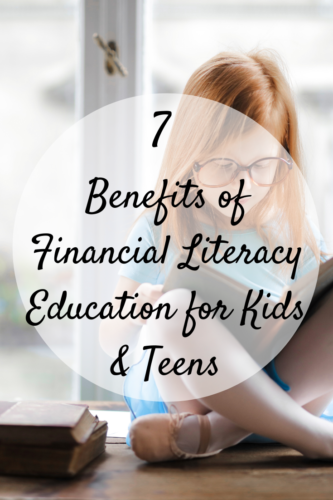
Financial education works.
A study by the FINRA Investor Education Foundation finds that state financial education mandates — when properly implemented — correlate with higher measures of financial literacy and real-world financial health in young adults.
In other words, kids who receive high-quality financial education in primary and secondary school tend to have higher credit scores and lower rates of credit delinquency as they age into the workforce. According to FINRA, credit scores increased in states with newly implemented financial education mandated by as much as 5%, suggesting a real and durable impact on consumer financial health.
An incremental increase in aggregate credit scores is not the only benefit of teaching the next generation to manage money. Financial literacy education has innumerable benefits for kids and their parents, not all directly tied to financial outcomes. Let’s take a look at some of the most compelling.
1. It Helps Kids See Financial Literacy (And Financial Fitness) As a Lifelong Pursuit
Like reading and math, financial literacy is a foundational skill that gets better with practice and remains relevant for a lifetime. More than that, it’s the basis for true financial fitness, the lifelong process of turning core financial literacy concepts into healthy financial habits.
That’s evident in the rise of social financial fitness apps like Goalswell, which recently raised $1.5 million in a fundraising round led by Andrew Nikou, CEO of OpenGate Capital. Kids who enjoy app-enabled financial education are much more likely to retain what they’ve learned and utilize key personal finance concepts as financially fit adults.
2. It Reinforces the Importance of Saving and Investing From an Early Age
No financial education curriculum is complete without lessons on the importance of compound interest. The earlier kids begin saving and investing for the future, the more time their money has to grow, and the likelier they are to reach their financial goals within the time horizons they’ve set for themselves.
3. It Helps Demystify Basic Financial Concepts
Financial literacy education unpacks the jargon that prevents many consumers from fully understanding the financial instruments and concepts they encounter every day. Put on the spot, most Americans can’t accurately define foundational forces like compound interest or return on investment, for example, despite their importance in responsible credit utilization and financial planning. Simply knowing what these phrases mean is a big step forward for financial novices.
4. It Clarifies the Distinction Between Responsible and Irresponsible Credit Use
Reasonable people can disagree on what constitutes “responsible” credit use. Some personal finance experts advise their followers to steer clear of unsecured credit products altogether; others advocate for credit card and personal loan use within well-defined guardrails.
But in all cases, financially literate consumers are better prepared to take credit-related decisions with far-reaching consequences. They’re better prepared to avoid predatory credit products, understand the true cost of borrowing over time, and calculate how a new loan or inquiry might affect their credit score.
5. It Empowers Young People to Make Informed Financial Decisions
Financial literacy education isn’t only about avoiding negative outcomes, like the vicious cycles of debt in which many payday loan users get caught. It also empowers young people to make positive financial decisions for themselves, like choosing the right income-based student loan repayment plan, taking all applicable income tax deductions and credits, or determining when they’ve accumulated enough savings to think about buying a house. This is how financial empowerment looks in the real world — and it begins with early-and-often financial literacy education.
6. It’s a Valuable Bonding Experience for Parents and Kids
Professional educators and informal role models can play important roles in childhood financial education, but parents are the first and most influential money teachers for most kids. And due to the personal, tactile nature of real-world financial lessons, the experience can be immensely valuable for the parent-child relationship. Even as kids age and crave some distance from the nest, they may continue to look to their financially fit parents for guidance on money matters.
Financial Fitness for All
With all due respect to the tireless parents and educators working to increase financial capability in the next generation, financial education is not rocket science. It’s hard work, for sure, and doing it well means rethinking tired old teaching techniques that don’t really work in today’s world, but it doesn’t require any technical leaps or strokes of genius.
Perhaps that’s why it’s easy to dismiss financial education — and financial literacy as a whole — as boring, even unnecessary.
We know it’s anything but. If you ever lose sight of the importance of a sound base of financial knowledge, just remember the FINRA study. Or the CFPB compound interest exercise. Or the Money Confident Kids survey.
Or…you get the idea. Here’s to a future that celebrates financial fitness for all.





